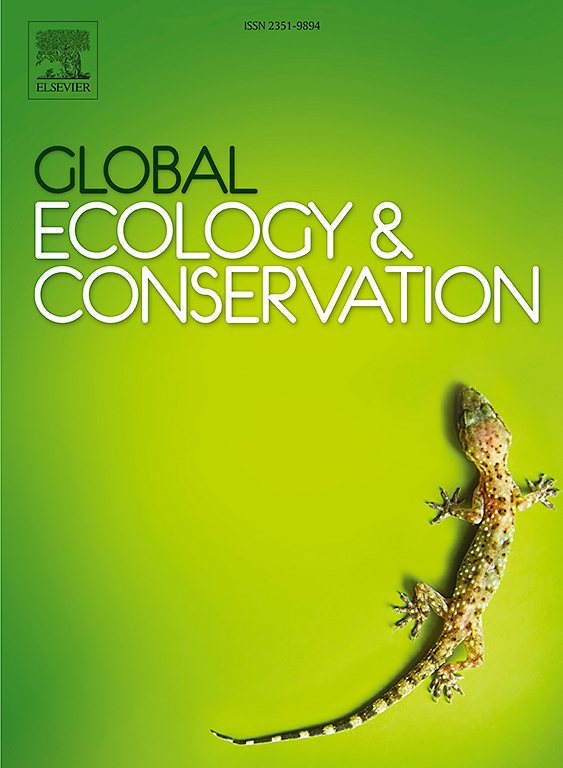Exotic Laguncularia racemosa drives rapid shifts in pond-to-mangrove restoration communities
IF 3.5
2区 环境科学与生态学
Q1 BIODIVERSITY CONSERVATION
引用次数: 0
Abstract
The rapid decline of mangrove ecosystems worldwide underscores the urgency of restoring these environments. In China and Southeast Asia, a recently popular method involves converting abandoned aquaculture ponds into secondary mangrove forests (i.e., pond-to-mangrove restoration), which reshapes the landscape to create suitable habitats for mangrove plants. However, an often overlooked issue is how these new habitats may facilitate the spread of exotic species. Our study examined plant communities in a pond-to-mangrove restoration area, comparing the plant community four and eight years after restoration began. We found that the exotic species Laguncularia racemosa expanded rapidly, significantly suppressing native mangrove species and altering the community structure. The relative abundance of L. racemosa increased from 8 % in the fourth year to 57 % by the eighth year, during which time three native species disappeared from the plot. By the eighth year, L. racemosa also dominated in terms of plant height. Given the rapid spread of invasive species and the high connectivity of wetlands, we recommend closely monitoring non-native plants during restoration projects like pond-to-mangrove restoration. Our study highlights the threat biological invasions pose to restoration efforts and the importance of managing ecological niches created by restoration processes.
求助全文
约1分钟内获得全文
求助全文
来源期刊

Global Ecology and Conservation
Agricultural and Biological Sciences-Ecology, Evolution, Behavior and Systematics
CiteScore
8.10
自引率
5.00%
发文量
346
审稿时长
83 days
期刊介绍:
Global Ecology and Conservation is a peer-reviewed, open-access journal covering all sub-disciplines of ecological and conservation science: from theory to practice, from molecules to ecosystems, from regional to global. The fields covered include: organismal, population, community, and ecosystem ecology; physiological, evolutionary, and behavioral ecology; and conservation science.
 求助内容:
求助内容: 应助结果提醒方式:
应助结果提醒方式:


